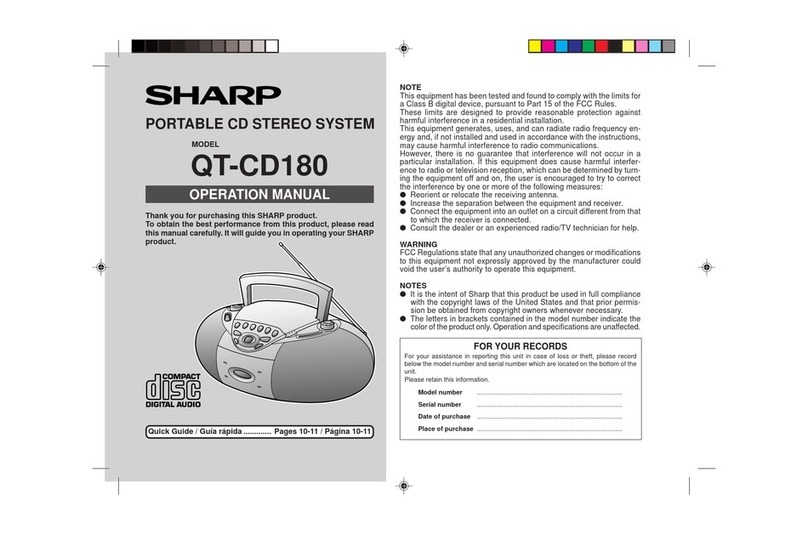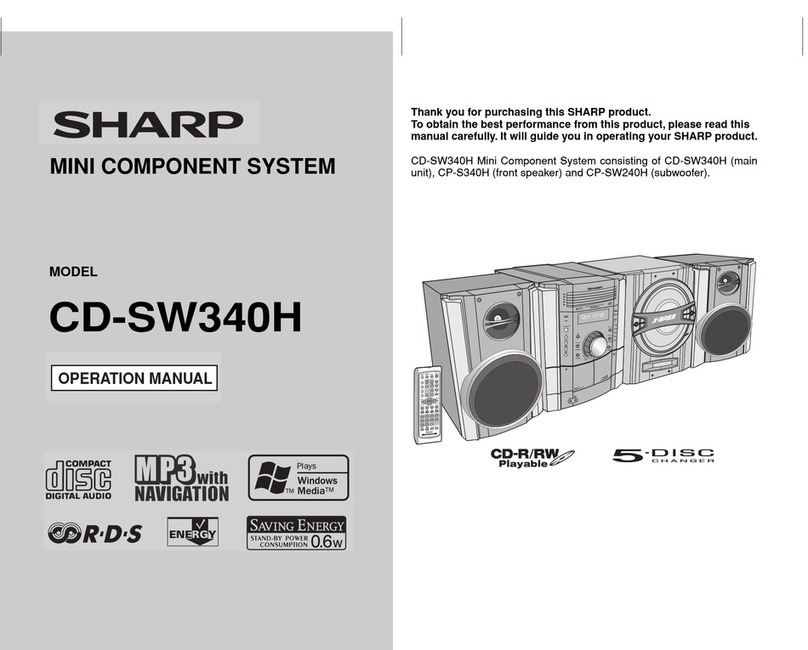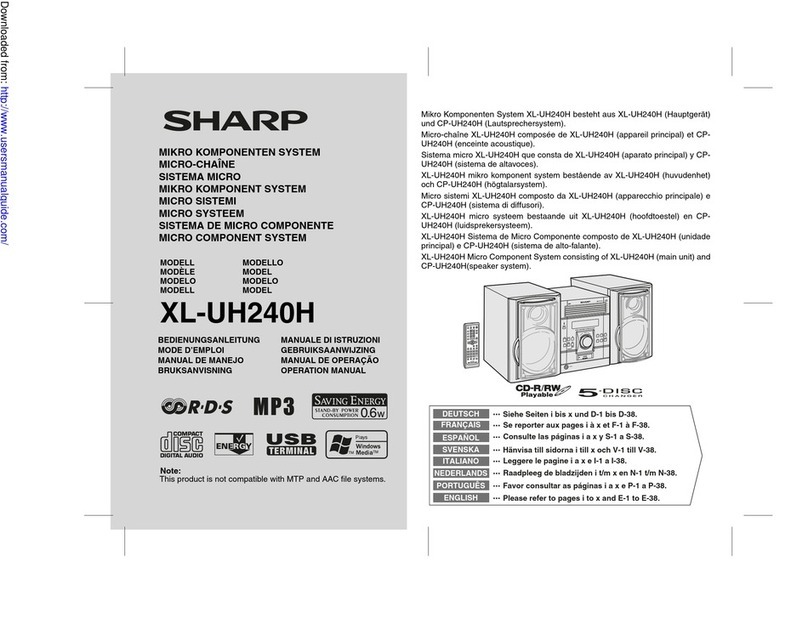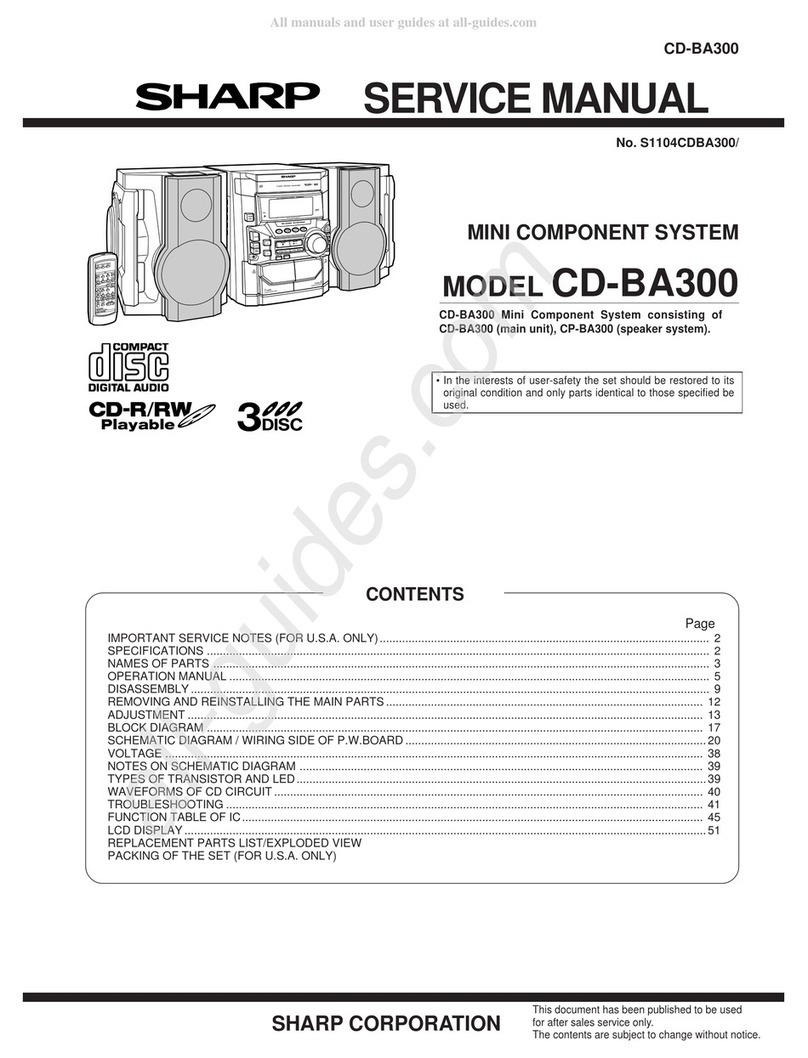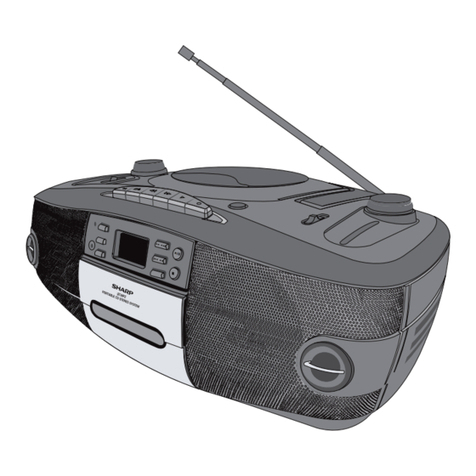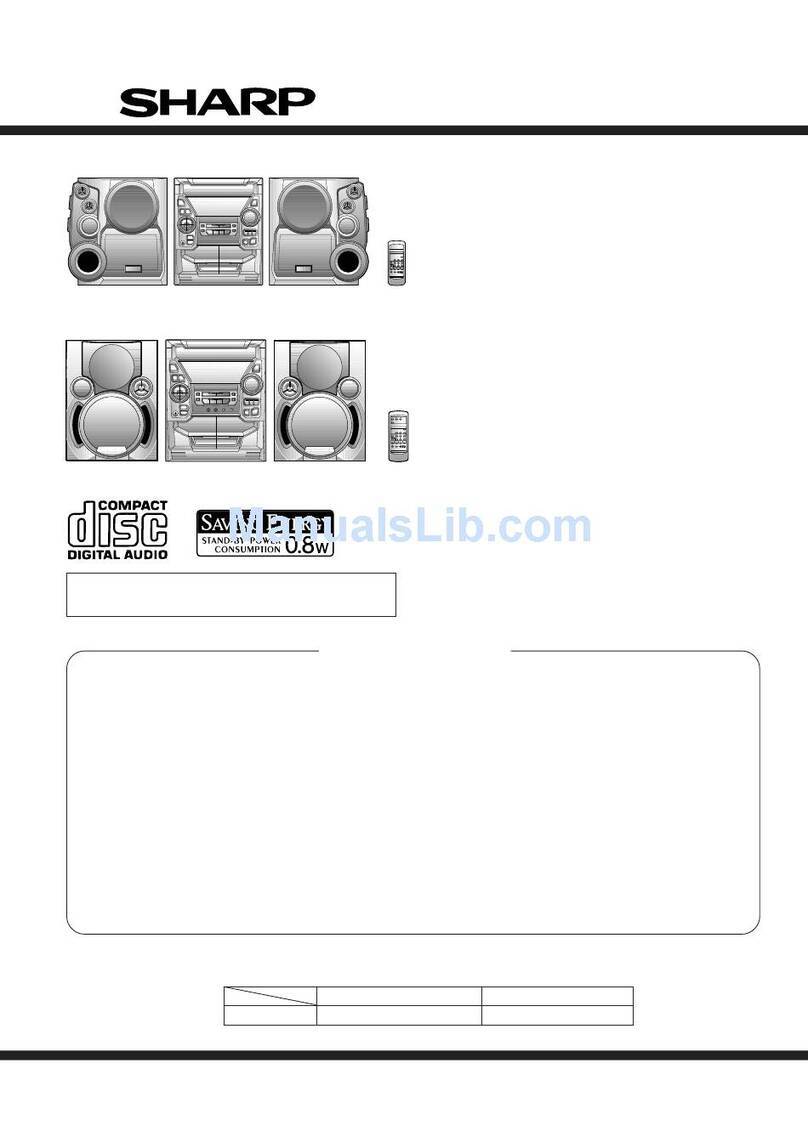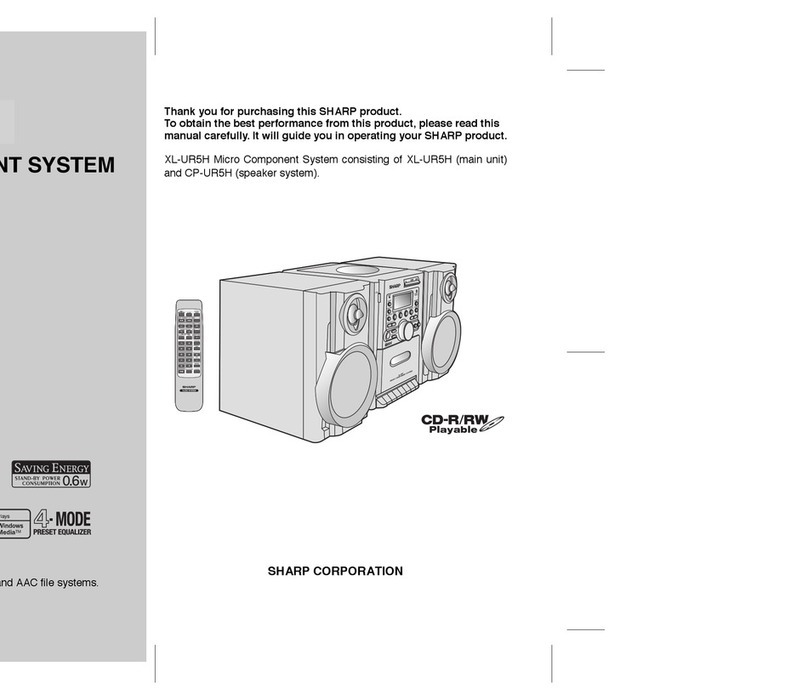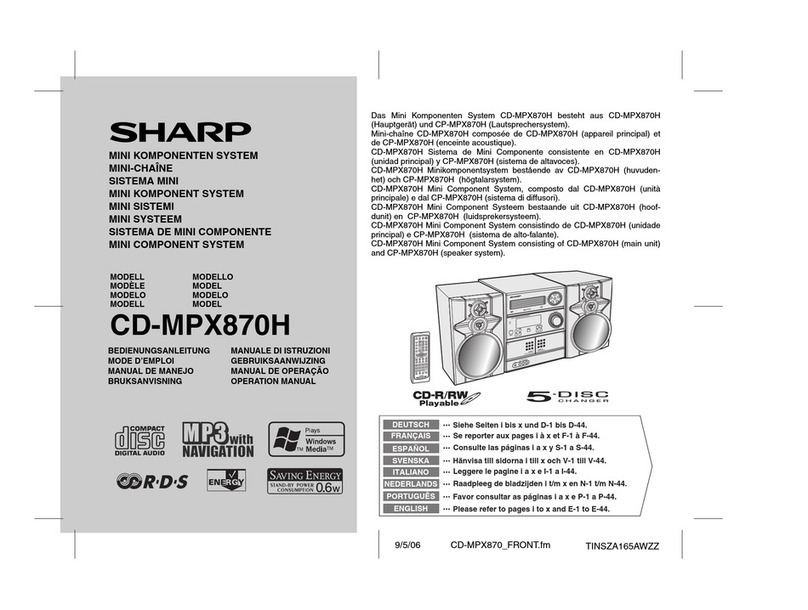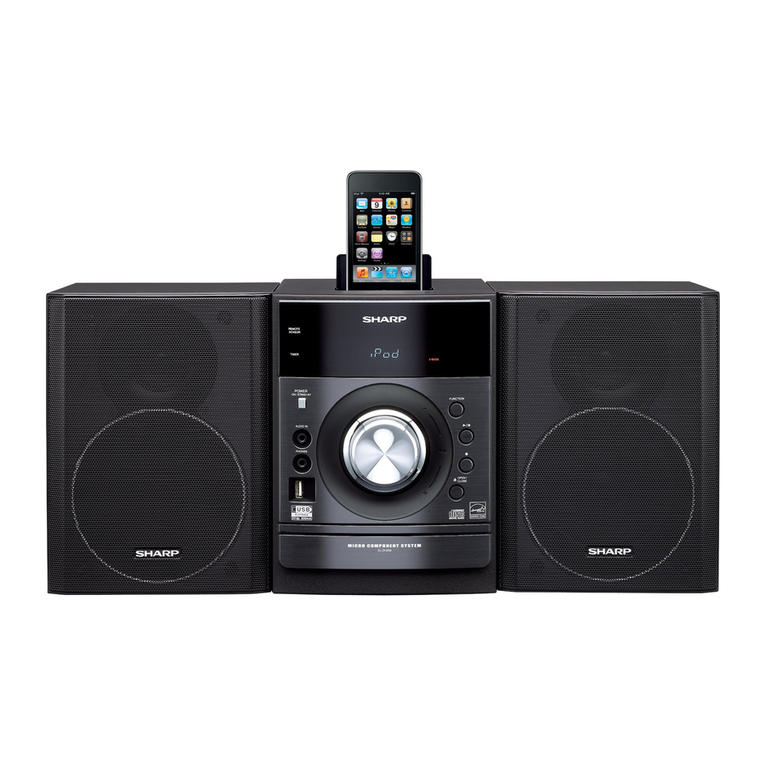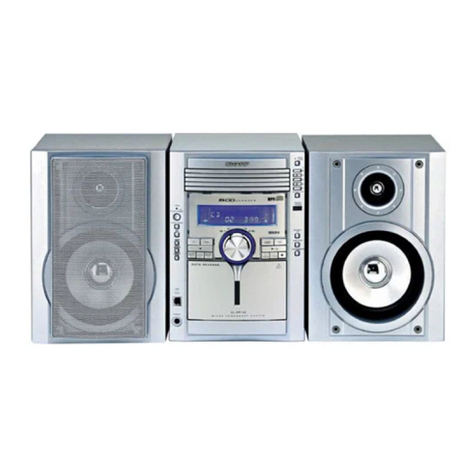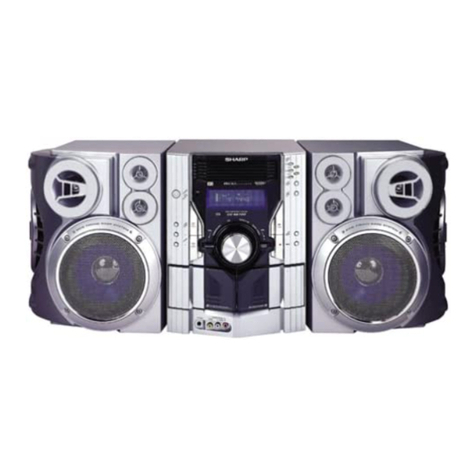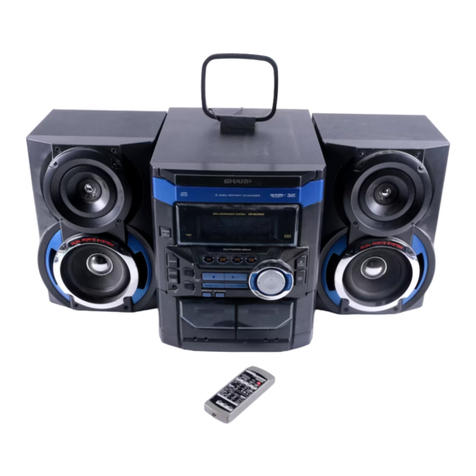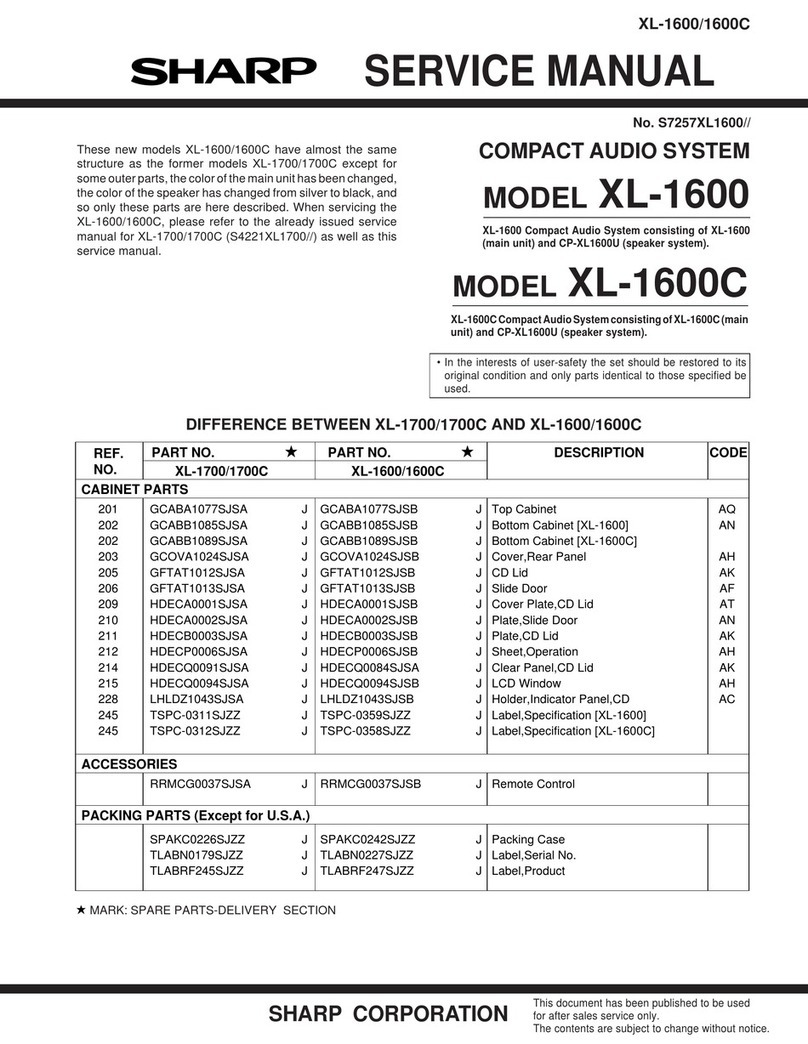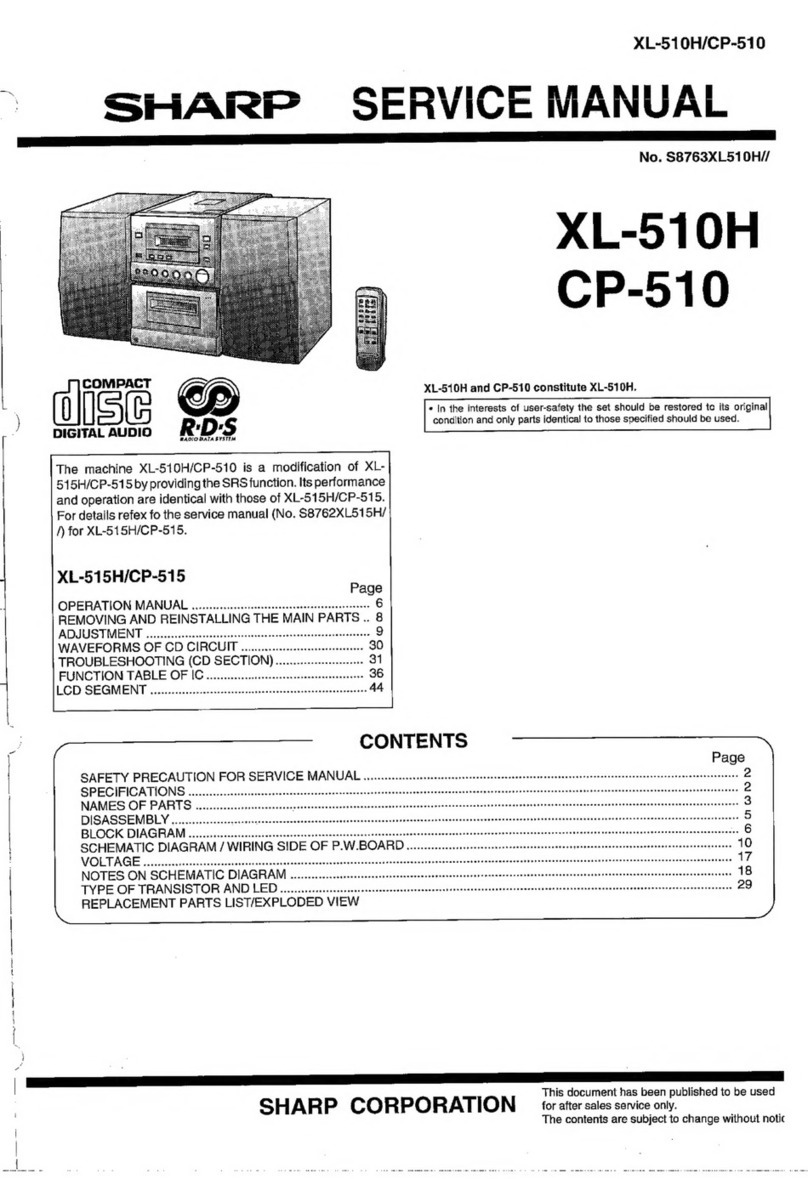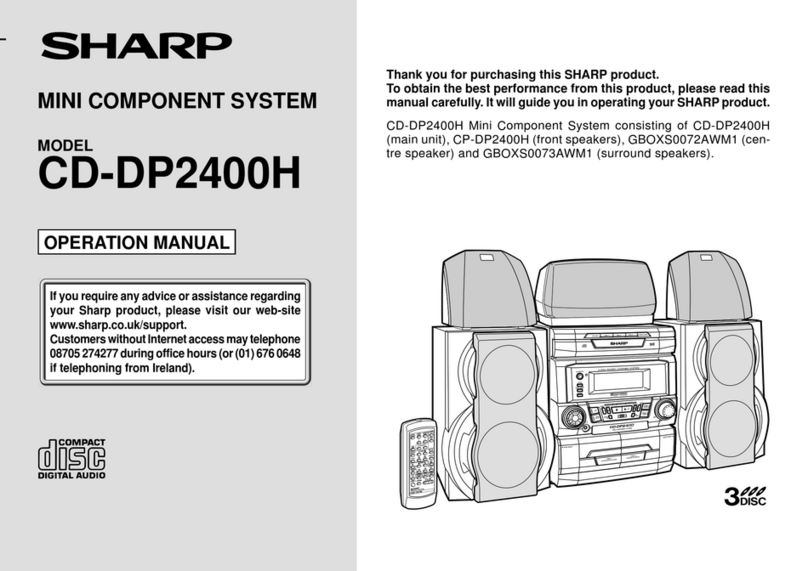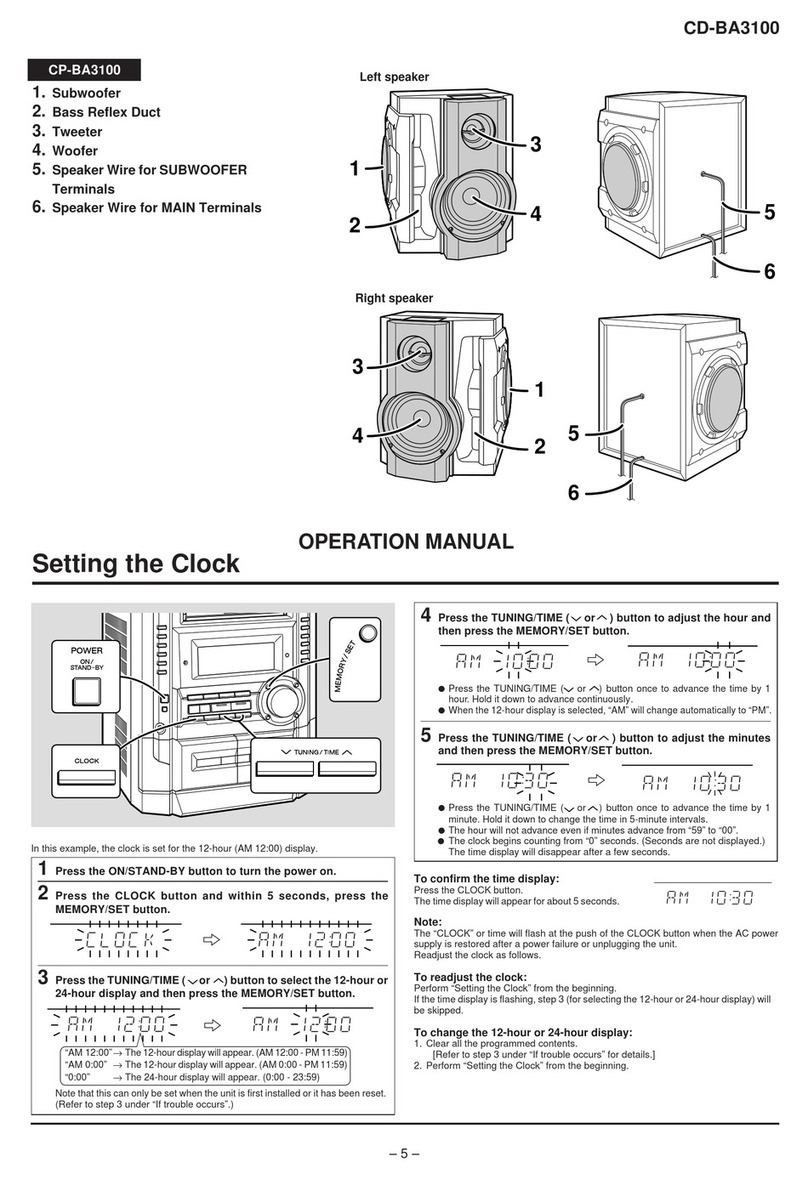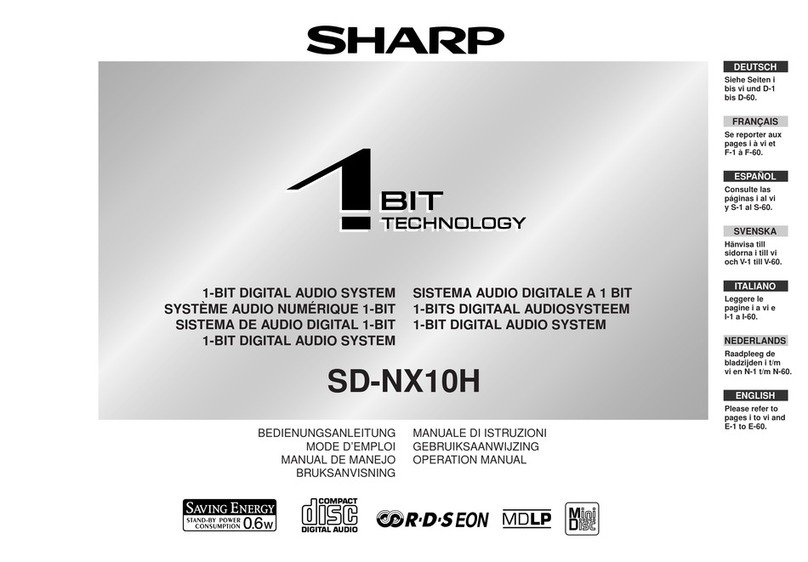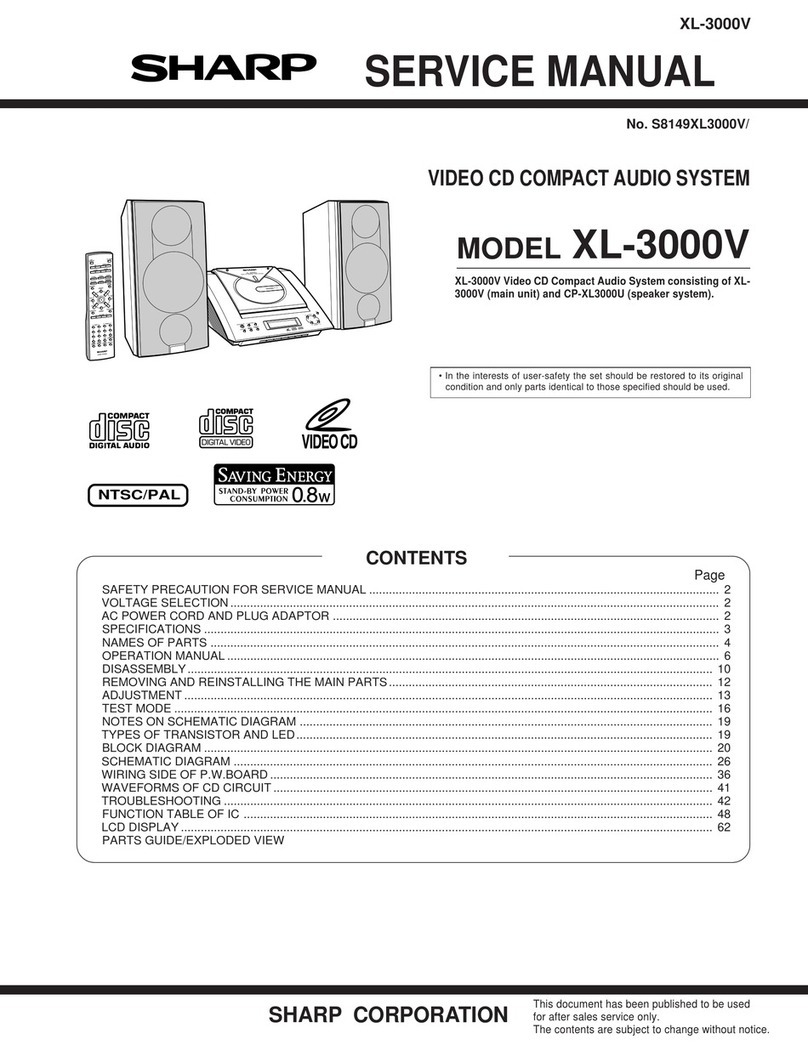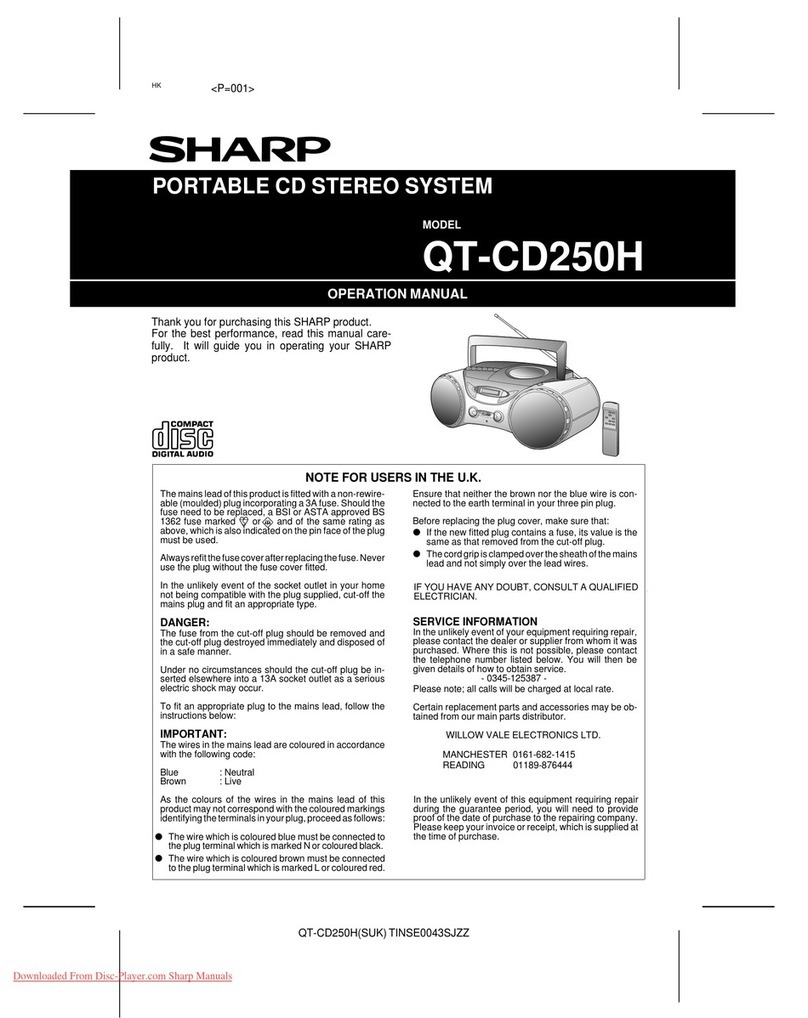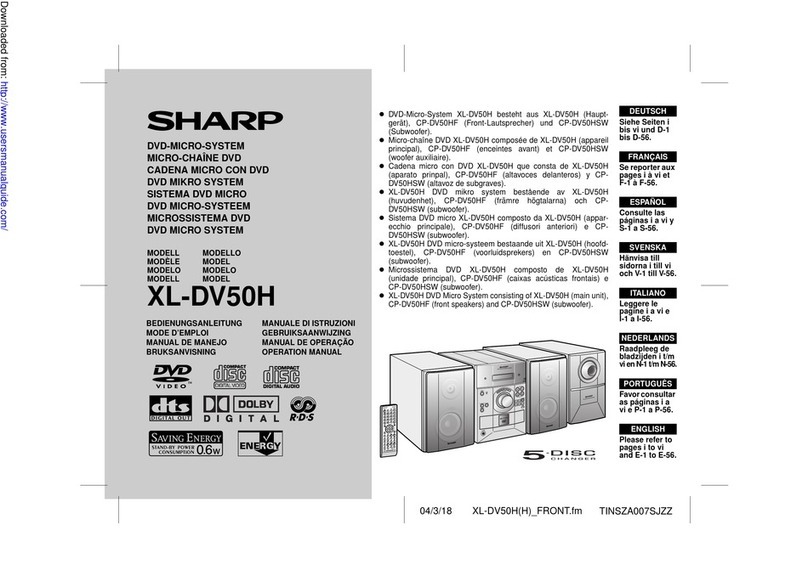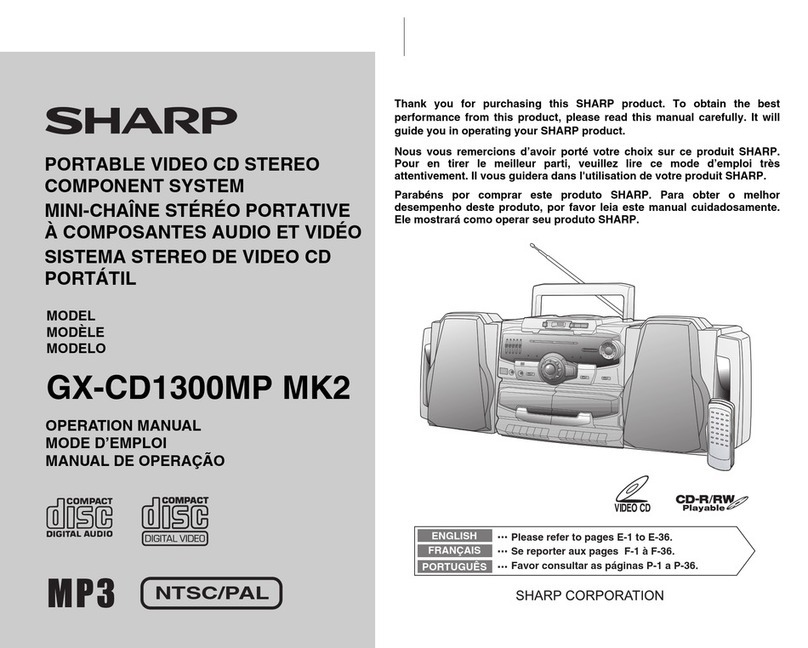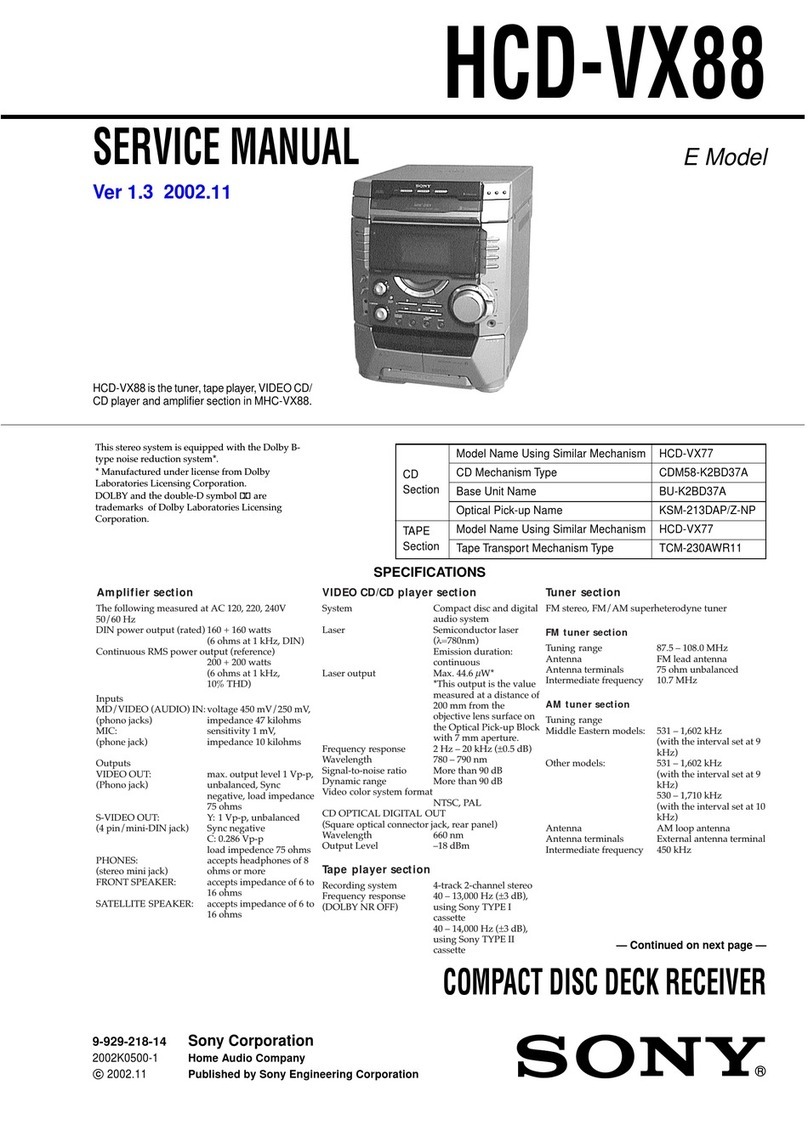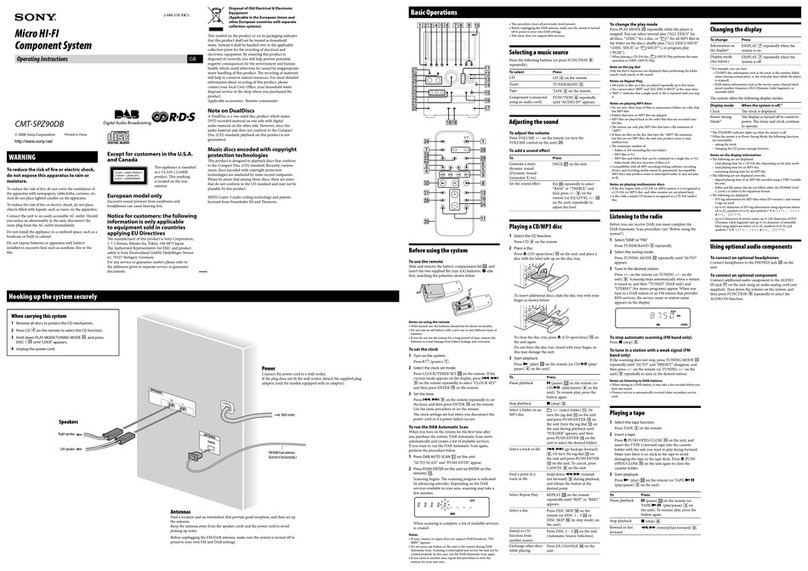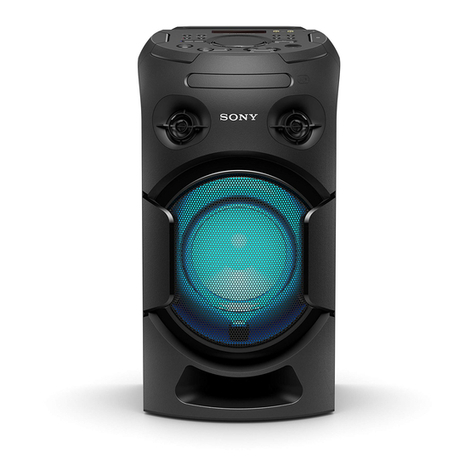
XL-55/55C
– 2 –
FOR A COMPLETE DESCRIPTION OF THE OPERATION OF THIS UNIT, PLEASE REFER
TO THE OPERATION MANUAL.
IMPORTANT SERVICE NOTES (FOR U.S.A. ONLY)
BEFORE RETURNING THE AUDIO PRODUCT
(Fire & Shock Hazard)
Before returning the audio product to the user, perform the following
safety checks.
1. Inspect all lead dress to make certain that leads are not pinched
orthathardwareisnotlodgedbetweenthechassisandothermetal
parts in the audio product.
2. Inspectallprotectivedevicessuchasinsulatingmaterials,cabinet,
terminal board, adjustment and compartment covers or shields,
mechanical insulators etc.
3. To be sure that no shock hazard exists, check for leakage current
in the following manner.
* Plug the AC line cord directly into a 120 volt AC outlet.
* Usingtwoclipleads,connecta1.5kohm,10wattresistorparalleled
by a 0.15µF capacitor in series with all exposed metal cabinet
parts and a known earth ground, such as conduit or electrical
ground connected to earth ground.
* Use a VTVM or VOM with 1000 ohm per volt, or higher, sensitivity
tomeasuretheACvoltagedropacrosstheresistor(Seediagram).
* Connect the resistor connection to all exposed metal parts having
areturnpathtothechassis(antenna,metalcabinet,screwheads,
knobs and control shafts, escutcheon, etc.) and measure the AC
voltage drop across the resistor.
All check must be repeated with the AC line cord plug connection
reversed.
Any reading of 0.3 volt RMS (this corresponds to 0.2 milliamp. AC.)
or more is excessive and indicates a potential shock hazard which
must be corrected before returning the audio product to the owner.
TO EXPOSED
METAL PARTS
CONNECT TO
KNOWN EARTH
GROUND
TEST PROBE
0.15 µ F
1.5k ohms
10W
VTVM
AC SCALE
SPECIFICATIONS
■General
■Amplifier (Except for Canada)
■Tuner
■CD player
■Cassette deck
■Speaker
Power source AC 120 V, 60 Hz
Power
consumption 48 W
Dimensions Width: 6-5/16" (160 mm)
Height: 9-1/2" (240 mm)
Depth: 11-11/16" (296 mm)
Weight 7.9 lbs. (3.6 kg)
Output power 20 watts minimum RMS per channel into 4
ohms from 100 Hz to 20 kHz, 10% total har-
monic distortion
Output terminals Speakers: 4 ohms
Headphones: 16 - 50 ohms (recommended:
32 ohms)
CD digital output (optical)
Subwoofer (Audio signal): 500 mV/47 k
ohms
Input terminals Video/Auxiliary (audio signal): 500 mV/47 k
ohms
Frequency range FM: 87.5 - 108 MHz
AM: 530 - 1,720 kHz
Type Compact disc player
Signal readout Non-contact, 3-beam semiconductor laser
pickup
D/A converter 1-bit D/A converter
Frequency
response 20 - 20,000 Hz
Dynamic range 90 dB (1 kHz)
Frequency
response 50 - 14,000 Hz (normal tape)
Signal/noise ratio 50 dB (recording/playback)
Wow and flutter 0.25 % (WRMS)
Type 2-way type speaker system
Tweeter
4" (10 cm) Woofer
Maximum input
power 40 W
Rated input power 20 W
Impedance 4 ohms
Dimensions Width: 6-5/16" (160 mm)
Height: 9-1/2" (240 mm)
Depth: 7-7/8" (200 mm)
Weight 4.7 lbs. (2.1 kg)/each
■Amplifier (For Canada)
Output power RMS: 40 W (20 W + 20 W) (10 % T.H.D.)
Output terminals Speakers: 4 ohms
Headphones: 16 - 50 ohms (recommended:
32 ohms)
CD digital output (optical)
Subwoofer (Audio signal): 500 mV/47 k
ohms
Input terminals Video/Auxiliary (audio signal): 500 mV/47 k
ohms
Specifications for this model are subject to change without
prior notice.
